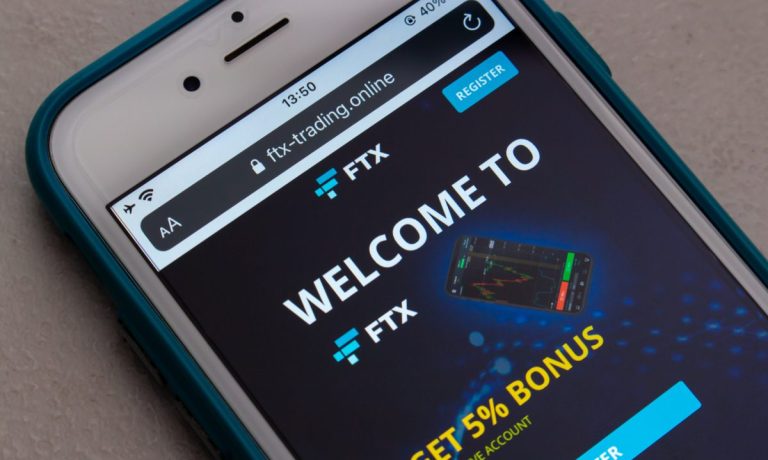
The knock-on effects of Sam Bankman-Fried’s abrupt heel-turn from evangelist darling to canary in the crypto coalmine are starting to show, as industry actors rush to distance themselves — and their business fundamentals — from the rug-pull implosion of FTX.
With the help of a marquee investor roster, SBF was able to build FTX into a massively popular exchange, once valued at $32 billion, and successfully promote himself as one of the most trusted founders in all of crypto. In the end, it took mere days for that all to come crashing down, providing a dramatic example of what can happen when visionary founders are given the reins to other people’s money with few strings attached.
To be sure, the cryptocurrency world was — and is — notoriously volatile and has been witness to large financial losses before the latest SBF debacle. But the multibillion-dollar hole FTX finds itself in now, on a pure numbers basis, needs to be put into context with the equally large hole the platform’s bankruptcy left in the public perception of the industry, as well as the corresponding erosion of public and private trust in crypto’s marketplace institutions.
The blink-of-an-eye tumble of FTX and the corresponding plunge of its FTT token to near-zero has affected up to a million of the exchange’s customers. The weight of countless headlines detailing the collapse have also likely dampened the crypto enthusiasm of countless would-be consumers and businesses that have been on the fence throughout the yearlong “crypto winter.”
While impossible to know for sure, the aftereffects of this embarrassing, costly and high-profile meltdown could delay institutional adoption of the asset class by years.
See also: BitPay CEO Says Knock-On Effects of FTX’s Collapse Not Yet Clear
The fact remains that much of the dubious detail surrounding FTX’s demise was apparent long before the final collapse, including the fact that FTX operated with no CFO and its board of directors consisted of only SBF, another FTX employee, and a lawyer.
Even when considered contextually within the “frothy” funding landscape of the past few years, the latitude SBF received from his investors seemed both unusual and extreme. Despite raising $2 billion from a deep roster of well-known firms, including NEA, IVP, Iconiq Capital, Third Point Ventures, Tiger Global, Altimeter Capital Management, Lux Capital, Mayfield, Insight Partners, Sequoia Capital, SoftBank, Lightspeed Venture Partners, Ribbit Capital, Temasek Holdings, BlackRock and Thomas Bravo, Bankman-Fried remained the majority owner of the company, limiting investor participation to an advisory board with no real sway over business decisions.
Like other toppled financiers, SBF used his pedigree and connections to seduce these supposedly powerful and sophisticated investors and regulators into missing the red flags waving in plain sight. Sand Hill Venture Capital titan Sequoia even published a glowing profile of SBF on its website, which the firm has since removed.
Read More: Sam Bankman-Fried, FTX and the Demise of the Cool Kids
Now those same investors, the ones who were hypothetically fully aware of FTX’s unusual leadership structure, including the lack of a C-level finance executive or risk management team, are considering whether to personally sue SBF for alleged fraud. It is unclear whether he even has enough personal assets for his investors to pursue, regardless of whether they could prove that he lied to them about his company’s financial health and trading vulnerabilities.
The irony is telling.
Industry actors hope FTX’s rapid demise does not turn out to be a rabid one, infecting other institutional crypto players with its tokenized death spiral. A credible CFO or risk and compliance team might have prevented, or even just drawn attention to, the co-mingling of assets that dragged FTX and its more than 130 affiliated companies, as well as those entities’ sizable user bases, to a swift bankruptcy. That’s why other exchanges are pointing their fingers now, not just at FTX and SBF’s failings, but also at the strength of their own regulatory controls and visions for a safer, user-focused future.
The cryptocurrency industry is still in its infancy, and FTX’s failure is sure to have a far-reaching impact on the industry’s reputation as a viable marketplace. It is not clear whether investors who trusted the platform to manage their cryptocurrency will get any of their money back. Binance, the world’s largest cryptocurrency exchange, and in some ways the actor responsible for FTX’s demise by causing the “run” that exposed the poor economics of FTX’s balance sheet, is taking advantage of this pivotal moment to position itself as the new marketplace leader and trusted standard bearer. Changpeng Zhao (CZ), the founder and CEO of Binance, Tuesday (Nov. 15) posted his “Six commitments for healthy centralized exchanges,” a list of principles to keep user investments on exchanges safe and secure, and a series of steps to take in order to restore trust.
Most crypto crisis stories tend to result from solvency, rather than liquidity problems. The problem is not converting assets to money, the problem is that the underlying assets are themselves bad and that the money, when demanded by customers, simply isn’t there. Crypto firms tend to have, and rely heavily upon, assets highly correlated to confidence in crypto as a whole — meaning a loss of confidence can often entail a corresponding loss of assets.
This is the problem the industry faces coming out of FTX’s collapse, and it remains the main issue that needs to be addressed in order to shore up faith and trust in the long-term viability of cryptocurrency marketplaces as volatile, but reputable, places for investors to park their money.
For all PYMNTS cryptocurrency coverage, subscribe to the daily Crypto Newsletter.